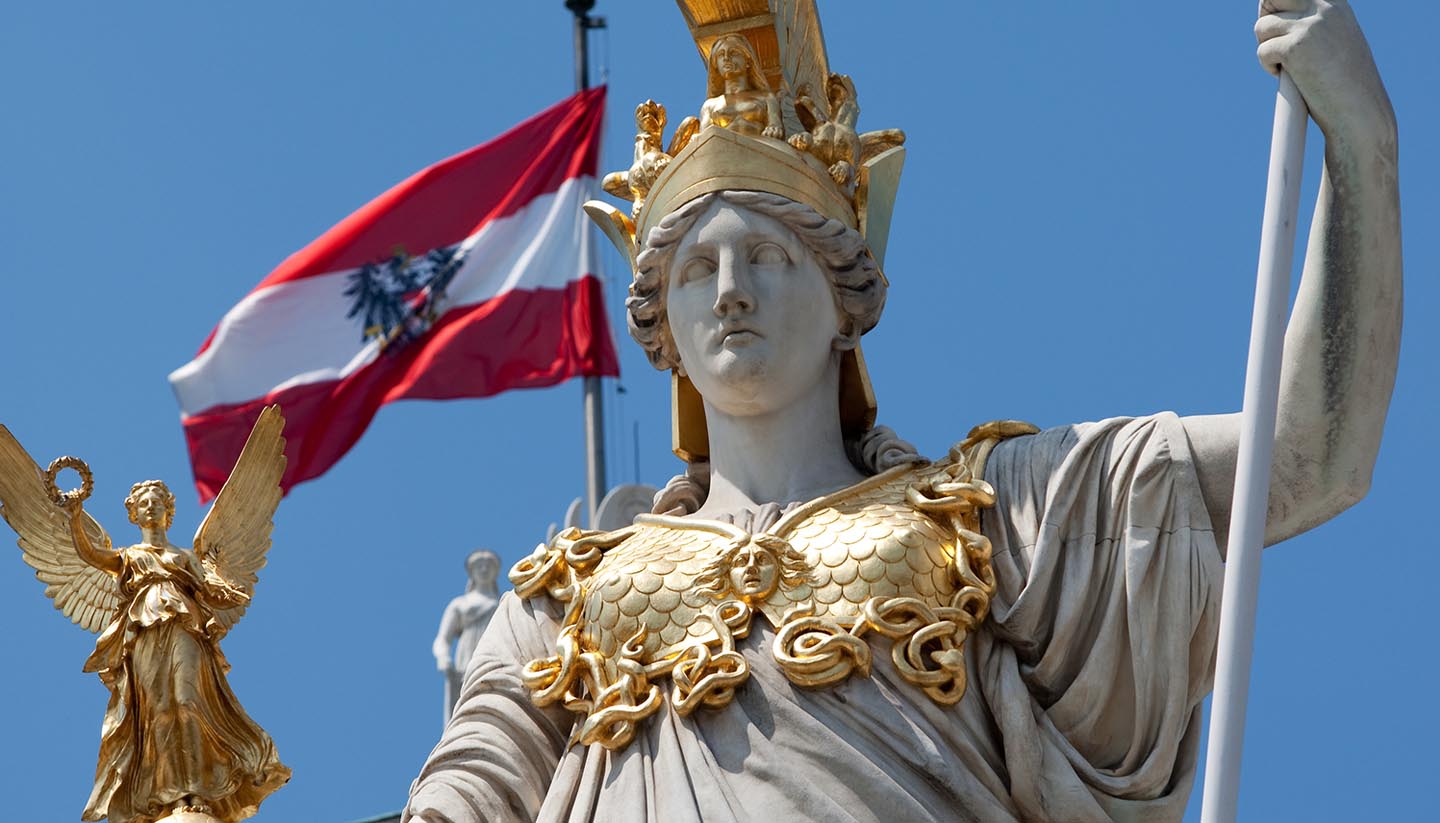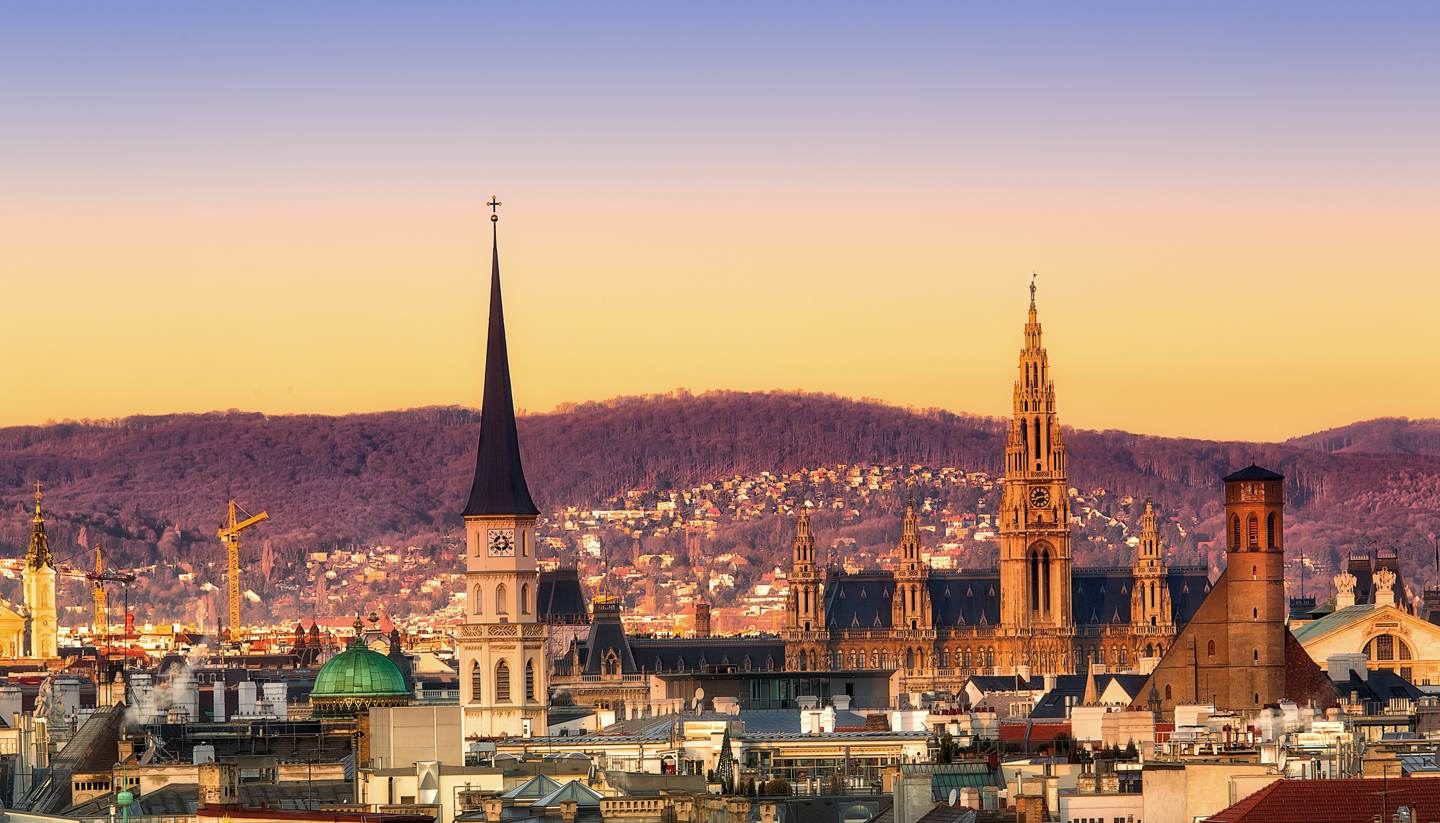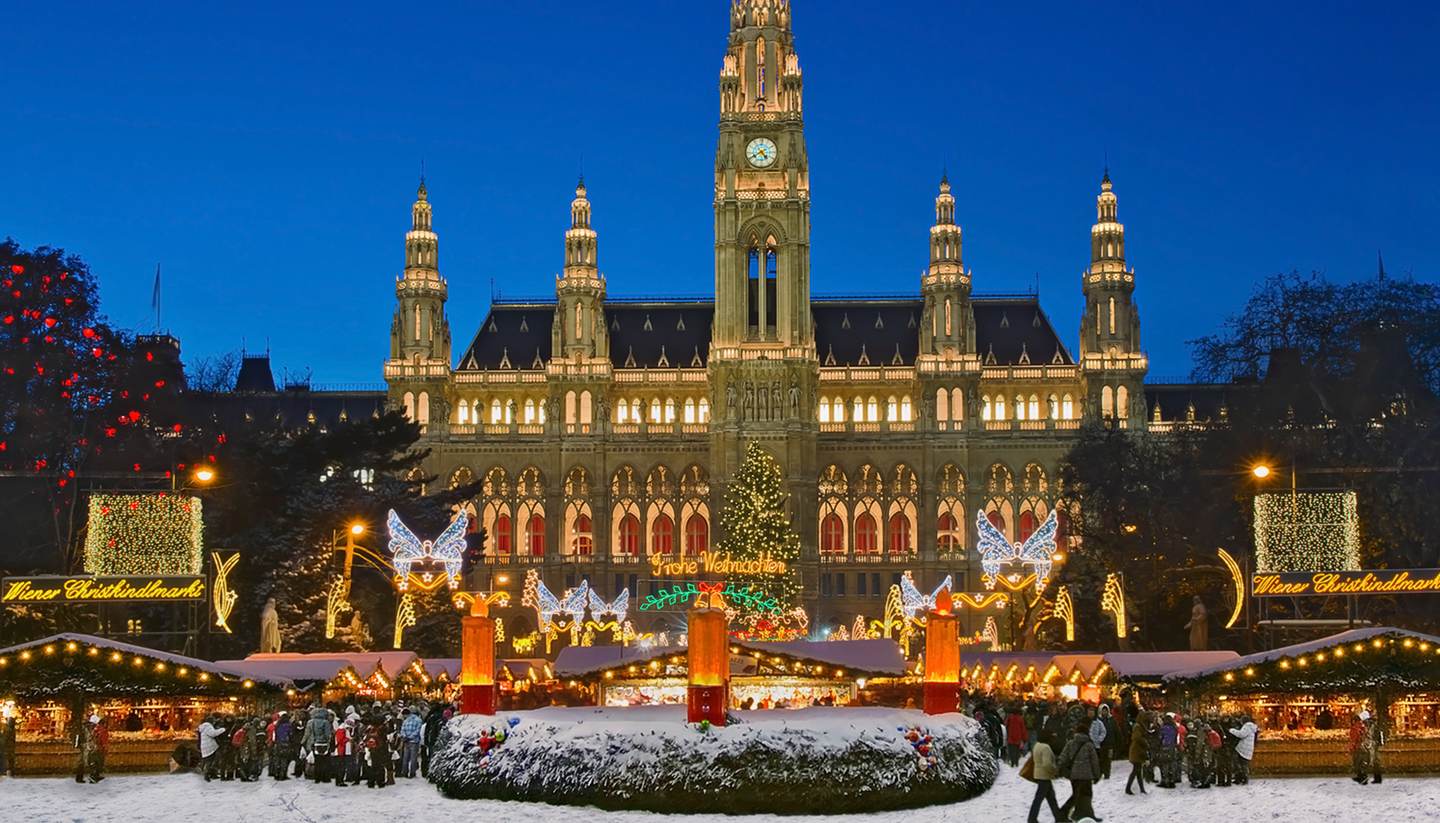Austria Food and Drink
Viennese cuisine borrows heavily from its southeastern European neighbours, most notably Hungary, Serbia, Romania and Dalmatia. Broth-based soups, dumplings, cheese spreads, and stewed and breaded meats are all commonplace, but the real star of the show here is confectionary.
Austria’s desserts and cakes are renowned, and the lavish patisserie window displays, piled high with towers of tortes adorned with intricate icing, are photograph-worthy. Gourmet culture is particularly evident in Vienna’s cafés, where coffee-drinking has been raised to a high art.
Specialities
Wiener Schnitzel: A traditional dish of bread crumbed and fried veal escalope.
Tafelspitz: Boiled beef topside in broth, typically served with horseradish.
Tiroler Speckknödel: A fried bacon and bread dumpling.
Palatschinken: Thin crêpe-like pancakes with savoury or sweet fillings.
Liptauer: A paprika-infused creamy spread made from sheep’s milk cheese, goat cheese, quark or cottage cheese.
Apfelstrudel: Austria’s most famous dessert consists of delicate layers of crisp pastry with an apple and raisin filling.
Salzburger Nockerln: A baked vanilla soufflé designed to resemble Austria’s snow-capped peaks.
Sacher Torte: A dense chocolate cake with a layer of apricot preserve, served with a compulsory dollop of whipped cream.
Mehlspeisen: The national term for cakes and puddings. There are around 60 varieties of torte, which is often consumed with coffee.
Stroh: Potent spiced rum available in several variants, ranging from 40% to a whopping 80% alcohol.
Glühwein: A warming mix of hot red wine blended with sugar, orange, lemon, cloves and cinnamon stick.
Obstler: Fruit schnapps, usually very strong and relatively cheap.
Wiener Mélange: A small coffee similar to a cappuccino served with steamed milk and topped with froth.
Things to know
The main meal of the day is lunch. All restaurants have waiter service, as do most bars and coffee houses. Bills are settled with the arrival of drinks.
Tipping
On restaurant bills, a service charge of 10 to 15% is included, but it is usual to leave a further 5%.
Drinking age
16 (for beer and wine); 18 (for spirits).




